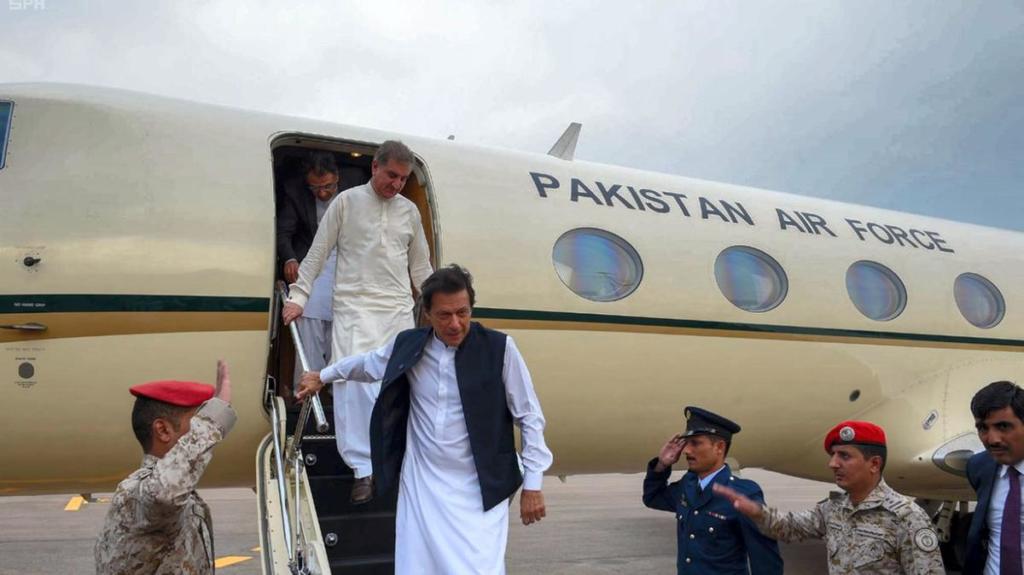After almost five months of the Balakot airstrikes, Pakistan has finally opened its airspace for commercial airlines. The country had shut down its airspace after India, triggered by the February 14 Pulwama suicide bombing, conducted airstrikes on Jaish-e-Muhammed terror camps in the Balakot town of its Khyber Pakhtunkhwa province on February 26. The airspace closure was extended five times by the Imran Khan government ever since.
Pakistan shut down its airspace in order to effectively ban, primarily, Indian flights from flying by as the threat of another Indian airstrike loomed on the country. The country’s administration also requested India to assure them that it shall not escalate, that is, repeat any such offensive, in order to reopen Pakistan’s airspace, to which no response was recorded from the Indian side.
Pakistan lies in a vital aviation corridor, and the airspace closure led to increase in flights’ duration, fuel costs and hence, flight costs making operations for airline companies costlier, as flights had to bypass the Islamic republic’s airspace. But most importantly, the closure of airspace affected about 400 flights a day resulting in a loss of almost $100 million for Islamabad. An extensive study has pointed out that there was a serious decline in revenues for Pakistan’s Civil Aviation Authority, CAA from route navigation and airport charges levied on flights flying over or landing in Pakistan.
Category of the aircraft and the distance traveled in Pakistan airspace determines the route navigation and airport charges levied by the CAA on overflying flights. The airspace closure, therefore, resulted in massive losses for the Pakistan government at a time when it is already burdened with debt and a crippling economy. For instance, the charge for Boeing 737 for flying through Pakistan is reported to be about $580, whereas the charge is more for bigger planes. In such a context, Pakistan positively recorded over $232,000 in losses in a day, that is, over $7 million in a month. Needless to say, the airspace closure stung the government of Pakistan directly.
With inflation skyrocketing over 8% to 9%, growth falling and a massive debt crisis looming on its economy, Pakistan desperately needs a flow of dollars into the country. With its forex reserves almost exhausted at $6 to $8 billion, and its exports failing to take off, Pakistan’s economy is crippled to the core. Its debts may even surpass its GDP, without counting the bailout packages received from the IMF ($6 Billion), Saudi Arabia and Qatar.
Pakistan has been struggling to stay out of FATF’s black list, with India lobbying strongly for the same as the country has taken little action over its terror camps and its money laundering systems to fund terror seem to remain in place despite being place on the grey list of the Financial Action Task Force, FATF last year. In the grey list, Pakistan already struggles to attract foreign investments and an inclusion in the blacklist would positively make things worse for the country and its economy.
Although, there has been a sharp decline in the intensity of ceasefire violations by Pakistan at the LOC, and there have also been reports that suggest that Pakistan’s funding of anti-India ‘NGOs’ abroad has also dried up but despite intense struggles due to international pressure, Pakistan has still not taken any concrete steps to solve the problem of terrorism breeding on its soil, and being exported to neighbouring countries like Afghanistan, Iran and primarily India, which Pakistan’s ISI has vowed to ‘bleed with a thousand cuts’. Pakistan had been taken aback by the February 26 pre-emptive strikes done by India on its soil, making it realise that the neighbour’s policy to tolerate its belligerence has been reversed. Nonetheless, with things cooling down between the two countries, Pakistan’s desperation for resources finally prevailed as the country reopened its airspace for commercial flights.
